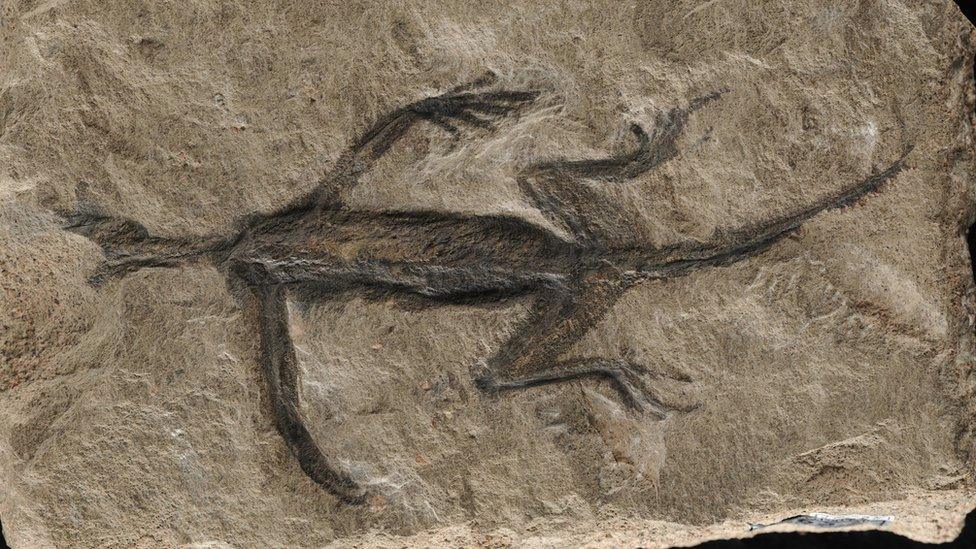Archaeologists find a '280 million-year-old fossil' forgery
- Published
- comments

Fossil forgery! A new discovery has revealed the truth behind this famous fossil
Imagine discovering that part of a '280 million-year-old' fossil was actually fake!
Well, that's what happened to a team of archaeologists led by Dr. Valentina Rossi of University College Cork, in Ireland.
The team wanted to take a closer look at the Tridentinosaurus antiquus fossil, which was discovered in the Italian Alps in 1931.
The fossil became an important discovery for scientists in understanding early reptile evolution because its dark body outline was thought to be very well preserved skin or soft tissues.
But after a closer look, it turns out it was just paint!
How did the researchers work it out?
The researchers examined the fossil using ultra-violet (UV) photography to look at it using light that we can't see with our eyes normally.
This showed that the fossil had been coated with some kind of varnish, which was used in the past to help preserve fossils in museums.
So the team thought the soft tissues might lie underneath the coating layer.
However, after Dr Rossi and the team used a microscope to take a closer look at the fossil and discovered that what they thought was preserved skin, was actually black paint and rock carved to look like a lizard shape!
Dr Rossi said the fossil 'misled previous researchers'
Dr Valentina Rossi, from UCC, said: "Fossil soft tissues are rare, but when found in a fossil they can reveal important biological information.
"However, our findings indicate that the body outline of Tridentinosaurus antiquus was artificially created, likely to enhance the appearance of the fossil.'
Co-author Professor Evelyn Kustatscher said: "The peculiar preservation of Tridentinosaurus had puzzled experts for decades.
"Now, it all makes sense. What was described as carbonised skin, is just paint."
Is it completely fake?
The good news is that the fossil might not be completely fake.
The researchers think the leg bones are real, although they are not very well preserved.
The new scans have also shown up an exciting new discovery, tiny bony scales called osteoderms - like the scales of crocodiles - on what might have been the back of the animal.
The team say that more research is needed to prove if the fossil is actually a fossil, but that's why using modern research techniques is so important - to help discover the truth.
- Published8 April 2019
- Published6 April 2023
